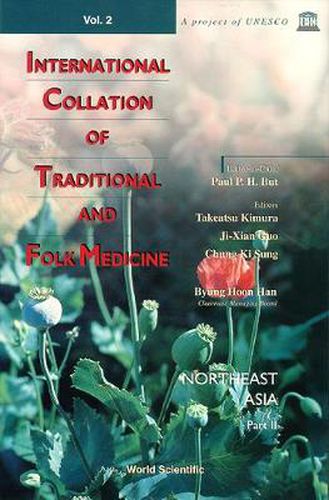Readings Newsletter
Become a Readings Member to make your shopping experience even easier.
Sign in or sign up for free!
You’re not far away from qualifying for FREE standard shipping within Australia
You’ve qualified for FREE standard shipping within Australia
The cart is loading…






Traditional folk medicine practices in China, Hong Kong, Japan and Korea - all located in Northeast Asia - are comparable. Since different usage of herbal medicine may reflect cultural or regional differences, a detailed collation of the folk knowledge of traditional medicine can help to identify common applications derived from different empirical knowledge as well as variations in appreciation of the value of the same herb in different cultural settings. This second volume of a series of books continues with the objective of collating relevant information for showing the differences and similarities of traditional folk medicine practiced around the world. It features 200 of the most frequently used medicinal plants in Northeast Asia as selected by the international editorial board. The folk medical knowledge in each entry includes the botanical names of the source plant, local names of the drug, special processing methods, administration methods, and applications in each country. Contraindications and side effects, if any, are highlighted. Relevant scientific data on their chemistry and pharamcology, with references, are also included. All this scientific information should be a valuable asset to medical and research scientists working on the bioactive components of natural products.
$9.00 standard shipping within Australia
FREE standard shipping within Australia for orders over $100.00
Express & International shipping calculated at checkout
Traditional folk medicine practices in China, Hong Kong, Japan and Korea - all located in Northeast Asia - are comparable. Since different usage of herbal medicine may reflect cultural or regional differences, a detailed collation of the folk knowledge of traditional medicine can help to identify common applications derived from different empirical knowledge as well as variations in appreciation of the value of the same herb in different cultural settings. This second volume of a series of books continues with the objective of collating relevant information for showing the differences and similarities of traditional folk medicine practiced around the world. It features 200 of the most frequently used medicinal plants in Northeast Asia as selected by the international editorial board. The folk medical knowledge in each entry includes the botanical names of the source plant, local names of the drug, special processing methods, administration methods, and applications in each country. Contraindications and side effects, if any, are highlighted. Relevant scientific data on their chemistry and pharamcology, with references, are also included. All this scientific information should be a valuable asset to medical and research scientists working on the bioactive components of natural products.